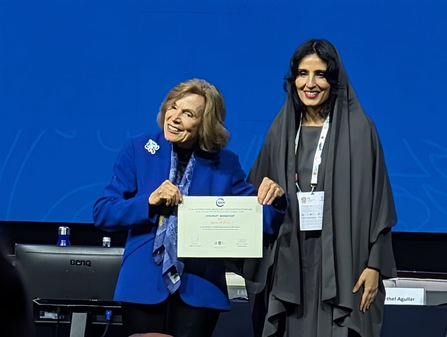The final day of this incredible conference draws to a close. What was unfamiliar becomes routine. Already the daily commute from downtown Abu Dhabi to the conference centre 10 miles away is unremarkable – if the traffic is busy, we take the slightly longer route through the tunnel and along the eastern mangroves; less busy, then straight through the centre of town and past the huge modern mosque.
The bizarre juxtaposition from the hot sun-scorched streets of the city to the cold air-conditioned airy halls of the conference centre is normalised.
Likewise, what was utterly confusing at the start of the conference crystallised into some sort of clarity by the end. Gradually it became clear that there were three big things going on.
1. The Members' Assembly
First is the main business of the World Congress – the Members’ Assembly. This is the equivalent to a Wildlife Trust annual general meeting but much wider in scope. There are reports on progress, the annual accounts and election of counsellors, committee chairs and dignitaries.


